Archive for ‘Time Management’ Category
Paper Doll Says: Don’t Get Stuck in a Rut — Take Big Leaps
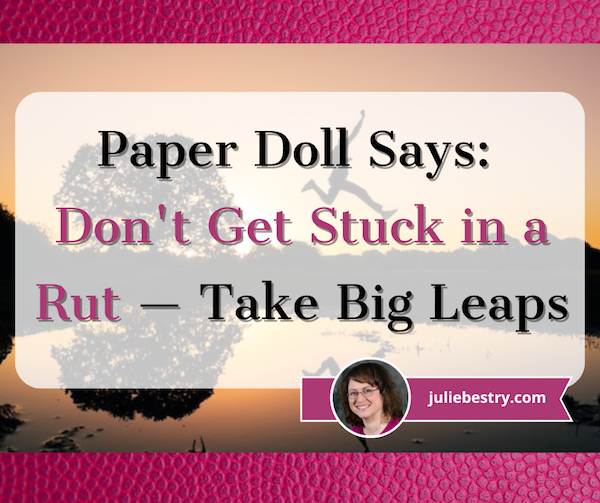
Are you feeling stuck? When you flipped the calendar to the new month and realized how close we are to the end of summer, and even the end of the year, were you struck by a gnawing feeling that you’ve been mired in the same place for too long?
Are your New Year’s resolutions the same every year? Do you make the same wishes, have the same complaints, and feel like you’re Groundhog Day-ing it through life?
At the end of May, in Organize Your Summer So It Doesn’t Disappear So Quickly, we talked about how the lack of structure, novelty, and sensory clues for the passage of time (along with lack of self-care and an excess of technology) can make us sluggish. We may keep doing the same things, over and over. We may not notice that sometimes we are very efficiently doing the wrong things.
Perhaps it’s time to stop doing some things, start doing other things differently, and to take bold strides on other things altogether.
Although most people think of professional organizers in terms of their possessions, I usually talk about how I help people manager their stuff. Stuff is more complex than just possessions. Your stuff may be what’s piled up on your desk or precariously balanced on your kitchen counter or squished into your closet.
Alternatively, the stuff causing you overwhelm may be the excess in your schedule rather than your space. The temporal, rather than the tangible, can also weigh you down.
However, it’s possible to be crowded out of your enjoyment of life by other than too much in your space and schedule. You could have so much going on in your brain that you can’t accomplish what you want.
The stuff in your head could be ADHD. It might be anxiety or clinical depression. And it certainly could be fear. In fact, several years ago, in Paper Doll Talks With Smead About Fear & Disorganization, I shared how fear holds us back.
Too much, or at least too much of what doesn’t serve you, can keep you from moving forward, from taking leaps. Today, we’re going to look at how to get out of a rut and then consider taking bold leaps forward.
HOW TO GET OUT OF A RUT
Investigate Your Life
Pull on your Sherlock Holmes deerstalker hat, twirl your Hercule Poirot mustache, jump in your Nancy Drew blue roadster, and think about what’s feeling stuck in your life. Let’s start by identifying the symptoms of being in a rut.

Have you lost your enthusiasm? If you can’t pinpoint obvious reasons (lack of recuperative sleep, diagnosed depression, a bed that’s just too comfy) for not wanting to get out of bed, you may be in a rut.
When someone asks you what you want — what to do, what (or where) to eat, or where to go, whether for the afternoon or for a holiday — do you mentally check out? Sometimes, when you’re in a rut, you can’t even imagine different ways of doing things.
You’re not broken. You’re probably in a rut.
The next step is to figure out why? Is it you, or is it what’s in your space, your schedule, or your head (that shouldn’t be) or what’s not there that should be? Understanding the root cause is essential.
It is too much of something? Is there clutter that’s keeping you from entertaining in your space or feeling relaxed enough in your home to pursue your activities? It may be obvious, as this is an organizing blog, but check your space for excess. Are you in a rut physically because you always have to move things off the counter to reach the microwave, or pull suitcases out of the closet to get to your clothes?
Do you have too many activities filling up your schedule? I don’t just mean work-related, though too many Zooms or in-person meetings can wear you down. Maybe your kids are signed up for so many after-school activities, which means you’re constantly schlepping them to-and-fro. Maybe you’ve been in the same clubs with the same people for what seems like forever.
Have you outgrown the life you’re leading? I’m not suggesting you need to take the 10:25 to Reno and leave your job and family behind. But there may be aspects of your life that no longer fit, like a too-small pair of jeans that makes you feel like you can’t really breathe.
It’s possible that you’ve grown out of the things you’ve collected. When my sister was in college, she had a few small elephant-themed items, and soon it became habitual for people to give her elephants in the form of earrings and knickknacks and stuffed animals. Somewhere after a few decades, I noticed that she wasn’t displaying the elephants. She was over the elephants.
And again, you may have things in your schedule that don’t serve the person you are, or the person you want to be. You calendar might not be overloaded, but the things in your calendar may no longer be giving you joy. Are you going to that book club because you’ve always gone or because you love the books and the people? (If you’re going just because you love the cheese plate, be assured that you really can buy that yummy cheese and eat it all yourself.)
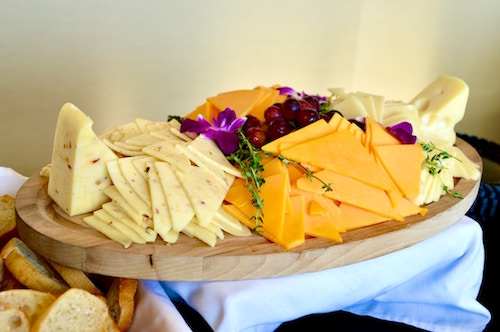
Cheese board photo by Andra C Taylor Jr on Unsplash
Track the Clues: Routine or Rut?
If, while playing detective, you find it hard to actually detect what’s wrong, you may need to get more granular. Pick a random week (or start with a day if a week seems overwhelming) and take note of what you do and how your week (or day) flows.
- Are there things you do the same way, over and over?
- Does each day’s schedule blend into the next?
- Do you have trouble differentiating between the average Monday and the average Thursday? (Does every day feel “average?”)
You may be thinking, “But Paper Doll, I have a routine! Isn’t the best way to make sure everything gets done to have a routine?”
Yes!
But also no, not always.
Routines and ruts are related concepts, but they have distinct differences:
A routine is a planned and organized set of tasks or activities that you regularly follow. Your laundry routine makes sure that you don’t have to send your tiny humans to school in Wonder Woman bathing suits under their clothes. Your morning routine gives you the centering, mindful energy, nutrition, and caffeine to keep you from smacking your annoying co-workers with a keyboard.
You design your routines to help you manage your time, reduce stress, and increase efficiency.
Conversely, a rut is a stagnant pattern, one that makes you feel unmotivated or unfulfilled. When you’re in a rut, you may find yourself going through the motions without any sense of intentionality. You’re doing what you’ve always done, getting what you always got. (The longer you’re in a rut, perhaps the less you get back?)
A routine is a deliberate; you structure the sequence of actions and schedule them to create a order in your life. A routine empowers you. By contrast, the stagnant nature of a rut — because you are no longer deliberately evaluating the success and productivity of the routine but just mindlessly abiding by it — may leave you feeling unfulfilled at best, and trapped at worst.
Ruts may occur in our diets, our personal activities, our careers, or our relationships. While Woody Allen isn’t exactly a favored source of inspiration these days, the movie Annie Hall has an apt quote.
While routines can be healthy and productive, ruts are usually associated with a lack of progress and satisfaction in life. We often consider “improvement” to be the key sign of progress, but in some cases, breadth, depth, or variety may also be evidence of progress.
Putting it all together, a routine helps you achieve a groove. But sometimes, treading that same ground, over and over, turns a groove into a rut.
The Magic of Intentionality
Once you see where your life is lacking progress, variety, or fulfillment, you can achieve more of what you want by intentionally making changes in various ways:
- Subtract — Look at what’s blocking your energy and take those obstacles away. If you’re not doing your workout because there’s junk piled up in your workout room, use all the resources we often talk about to sort, clear the clutter, move things to more logical homes, and/or donate, sell, or discard what no longer fits your life.
If there are activities that no longer float your boat, jump overboard. You might have to relinquish responsibilities and it could momentarily inconvenience others to have to find someone to handle the role you’ve done uncomplainingly for far too long. That’s OK.
Offer to help your replacement with the transition, but stand firm on letting go of tasks that don’t nourish you personally or professionally.
- Add — If you’re in a rut, just taking things away probably won’t solve all of your problems.
Having more empty space may mean you don’t have as much housework to do, or it could make you uncomfortable. If you finally eject all of your ex’s stuff from the house, the emptiness may make your space, and even your life, feel cold or lacking. Mindfully consider what you might enjoy having in your space.
Similarly, emptying your schedule of undesirable obligations may not be enough. Having all that extra time may initially make your life feel empty. You needn’t fill every moment all over again with different activities, but do open your mind to exploring what you may have not realized you were missing.
Start by adding self-care activities to slowly fill up a small number of those relinquished schedule slots. Remember to make time for sleep, mindfulness or meditation, exercise, nutrition, and uplifting social relationships. Feed your body and your mind to jump out of that rut.
Daydream and allow for possibilities you never previously considered. Just because you never considered yourself artistic or creative before doesn’t mean you might not explore a painting class or community theater. Maybe you’ll try to acquire new skills or knowledge relevant to your goals, but remember that personal fulfillment or enjoyment is a good enough reason to have new experiences.
Not everything is about productivity. Let joy be enough.
- Prioritize — Once you know the negative effects of the rut you were in and have considered how you want to replace (or enjoy the absence of) the tangible, temporal, and cognitive clutter you had before, figure out what’s most important to you.
Do you want to work on your body? Your spiritual well-being? Your professional development? Do you want to taking dance lessons or spend more time reading?
Spend some time writing down everything that was missing from your life when you were in a rut, and what you want to experience instead. Then pick your top two priorities.
Why two? If you are working on just one priority, and achieve it, turning to the next on your list will make you feel like you are starting from scratch, which can be demotivating. Focusing on one priority, but having a backup that gets a little attention, means you always have an proactive alternative to consider when you need a pause.
Why only two? Focusing on changing more than two areas of your life simultaneously usually leads to overwhelm. The goal is to lighten your life, not weigh you down.
- Break it down — Once you figure out what you want, figure out what gets you there.
Let’s say your rut was dietary. No matter how much you love tacos, having Taco Tuesday every week, with no change in the ingredients or dining companions or cooking responsibilities can be a bit much. Break your proposed life changes down into small steps and reconsider everything.
Maybe your spouse will cook more often; perhaps your family will experiment with group meal planning and grocery delivery, eliminating Thursday shopping trips (and the need for a babysitter).
- Reinvigorate your routines — Remember what we said about the difference between ruts and routines. It’s OK to have routines; just be intentional about them.
Getting out of a rut doesn’t mean abandoning all structure from your life and schedule. It doesn’t mean never cleaning the bathroom; it does mean giving yourself permission to delegate the task your teenager (either as a life lesson or in return for car privileges) or hire a cleaner.
It doesn’t mean never taking your kids to their activities, but it does mean exploring the alternatives — trading off with your co-parent, with other kids’ parents, or (if your kids are old enough) arranging for a car service — so the time you spend going to your children’s activities are more often related to seeing or participating in those activities (as a supportive audience or coach) because you are now more fulfilled.
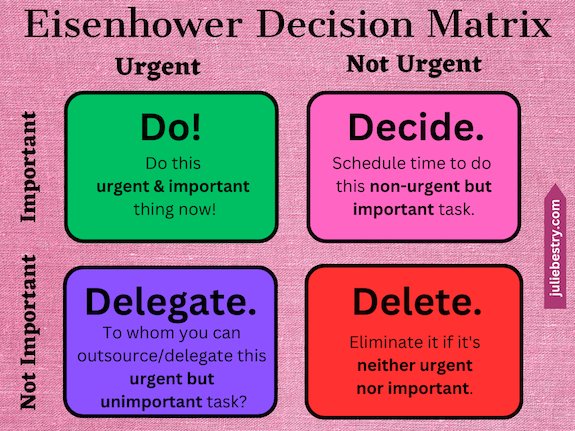
Use the time management skills you’ve learned from this blog and elsewhere to use the Eisenhower Matrix to put more of your attention on tasks with high importance and/or high urgency and reject or lessen the things with lesser value to your life.
- Replace the bad stuff with good stuff — This is a follow-up on the advice to add and subtract. If you were in a nutrition rut, you might eliminate the purchase of empty calorie foods. If your life has been filled with the equivalent of empty calories, eliminate the distractions of app notifications, clutter in your workspace, and interruptions from people and relationships that don’t fit your greater good.
- Stay flexible — If you’ve been in a rut for a long time, empty space (in your home, your schedule, or your mind) may feel scary. You could be tempted to create lots of new routines with just as little flexibility as before, and you’ll find yourself worn down again. Leave yourself open to adapt to new possibilities. Nobody gets out of a rut overnight. Have patience with yourself.
- Welcome support — Reach out to supportive friends or family for help brainstorming, noticing habits, or seeing new pathways. Professional organizers and productivity coaches can help you find new ways to make changes in your space, schedule, or thoughts. If you’ve been weighed down by more problematic thoughts or feelings, consider how a therapist can provide valuable perspective, guidance, and support. You’re not alone.
For more on excaping a rut:
You 2.0: How to Break Out of a Rut (Hidden Brain podcast)
How to Get Out of a Rut in 8 Steps (Master Class article)
How To Get Out of a Mental Rut, According To Psychologists (Well+Good article)
Getting Off the Treadmill: Six Ways to Break Out of a Rut (Science.com article)
Finally, and especially as we’re approaching the Jewish New Year at the end of this week, I encourage you to revisit Organizing A Fresh Start: Catalysts for Success for motivation and support.
HOW TO TAKE A BIG LEAP
The opposite of a rut can be a leap.

Sunset Leap by Kid Circus on Unsplash
Once we figure out what to stop doing, and start examining what we’re going to do differently, we give ourselves permission to think on a grander scale.
We have lots of reasons why we don’t take leaps, and they are similar to why we stay in ruts. Why make waves? Why risk new problems? We generally step back from taking leaps because of fear, and those fears may or may not be warranted, but they definitely keep us in limbo, wanting but never trying.
I’m a cautious person by nature. I suspect that’s true of many professional organizers. We’d rather prevent problems than have to fix them, even though our arsenal of skills helps us do both.
In college, I never took Italian because I feared doing damage to my GPA, and I was a decade out of graduate school before I realized that never once after I left academia did anyone, ever, ask about my GPA. Studying Italian these five years has brought joy to my life; my only regret is that my introduction came from the cartoon characters in Duolingo and not the the professors and fellow students at Cornell 35 years earlier.
There’s no wrong time to take a leap. There are certainly wrong ways. Selling your wares for magic beans isn’t smart; giving up your well-paying career to become a professional surfer when you’ve lived your entire life in Iowa probably won’t yield a secure life. But I’d like to share the advice on leap-taking I’ve gleaned from a few articles I’ve read lately.
Regrets, I’ve Had a Few
In Woulda, Coulda, Shoulda: The Haunting Regret of Failing Our Ideal Selves, the author looks at the published research of Cornell University professor Tom Gilovich and former grad student Shai Davidai in The Ideal Road Not Taken: The Self-Discrepancies Involved in People’s Most Enduring Regrets.
They identfied three elements of our sense of self, the:
- actual self — the attributes a person believes they possess.
- ideal self — the attributes people would ideally like to possess (including their “hopes, goals, aspirations or wishes”)
- ought self — what a person feels they should have been, based on duties, obligations and responsibilities.
Through six experiments, Gilovich and Davidai looked at two areas of discrepancy — what they call ought-related regrets and ideal-related regrets.
When people look back at their lives, they cope fairly well with any discrepancy between what they thought they ought to have done, in terms of duties and responsibilities, and what they actually did. Basically, we forgive ourselves when we feel like we ought to have dieted and exercised, we ought to have been more attentive to our studies, or we ought to have been better at managing our money.
Conversely, when we fail to take actions that could allow us to become our ideal selves, those regrets remain unresolved; we don’t get over our failure to act to become whomever we might have been.
Most tellingly, Gilovich said, “In the short term, people regret their actions more than inactions, but in the long term, the inaction regrets stick around longer.”
This brings to mind two of my favorite quotes:
“It is never too late to be what you might have been.” ~ George Eliot
It is never too late to be what you might have been. ~ George Eliot Click To Tweet“The life you have led doesn’t need to be the only life you have.” ~ Anna Quindlen
The life you have led doesn't need to be the only life you have. ~ Anna Quindlen Click To TweetRisky Business
Do You Rarely Take Risks? Maybe it’s Time You Do, talks about how mindful risk-taking can be extremely rewarding. As we age, we’re more likely to settle into our comfort zone, and that coziness of comfort zone can easily leave us mired in a rut.
The article shares the advice of clinical psychologist Carla Marie Manly, who warns that as we age, we tend to turn more toward fixed mindsets than growth mindsets, narrowing the new opportunities we give ourselves. Manly advises that we first work to be conscious of the fact that we’re prone to lock down, which enables us to be aware of our fear and then deal with the related discomfort.
Manly argues in favor of acknowledging our discomfort but choosing risks that we find compelling. They don’t have to be big risks; the “riskiness” might be as small as ending up with a meal you don’t love as much what you usually order. But organizing your life to experience things that are new, different, and outside of your comfort zone increases the chance that you will increase the size of your comfort zone!
Respect Yourself. Don’t Reject Yourself.
One of the best things I’ve read lately related to taking leaps came from this article from Ness Labs entitled Turning Fear of Failure Into Increments of Curiosity.
So often, when we fail to take a leap, we do it out of fear of failure, particularly the fear of others judging us, especially if we fail.
The focus of this excellent piece is that we should approach bold strides as if we were scientists. The scientific method says, “Hey, let’s try this and see if it turns out the way we expect.” And if it doesn’t? Science says, “That’s cool, too! Because now we know!”
The article recommends making small moves and iterating again and again, creating bigger growth loops. It’s a short piece, and I recommend reading at least the end, where the author walks through the steps of an intentional life experiment for getting past the fears that keep us all from moving forward.
But my favorite part of the piece was near the beginning. The author, Anne-Laure Le Cunff, recalls being ill at ease about applying to a selective academic program abroad; she feared she would not be accepted. Le Cunff’s mother noted, “It’s not your decision to make.”
This was a “wow” for me. When we hesitate to take action out of fear that we will not win, or be accepted, or hired, or loved, we are taking the opportunity to reject or accept us out of the hands of the panel or the company or the person whose decision it should rightfully be.
The Big Leap — It’s Your Decision
Nobody can make the decision for you as to whether you will make bold strides, or when, or how.
The following short film examines a dilemma at the top of a ten-meter diving tower: to leap or to risk the embarrassment of climbing all the way back down. I think you’ll find it worth the price of admission. (Note: Almost all of the dialogue is in Swedish with English subtitles, but there are a few English profanities. Consider yourself forewarned.)
Fortune favors the bold, or so goes an ancient Latin proverb. Would you leap?
Use Your Heart, Head, and Hands to Organize During the Slow Times
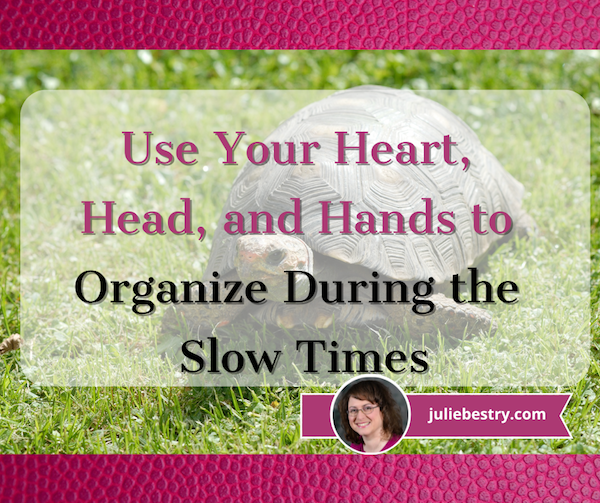
Most of time, we organize so that we can find what we need, when we need it, so we can zip along to the next thing on our list, lickety-split, so we have more time to get more done.
For most of our days, our weeks, our our lives, we zoom along like video game characters, basically PacMan eating up the dots, just trying to get to the next point in our lives. There are periods where we never feel like we have enough time.
(This video is 12 minutes. Please don’t feel obligated to watch more than a few seconds.)
Of course, there are also slow times, whether in business or in life. They fall during the chasm between Christmas and the New Year, surround long holiday weekends, and make up those lazy, hazy days of summer.
Sometimes, the days are slow because the kids have just started back to school but the rush and hubbub of after-school activities have yet to start; other times, we’ve slowed down because we’re recuperating from illness, and while too strong to take to our beds, we’re too fuzzy-headed to tackle a Zoom call. We don’t often get to pick when it’ll be slow, but slow times do come.
In fact, things might be slow for you right now. Perhaps your department just delivered a big project and is in a “pending” mode until it’s clear what the clients thing. Maybe you work for a company with a big European contingent and they start slowing down as the summer approaches (and pretty much shut down altogether in August), so there’s less (or no) urgent work. On the homefront, maybe maybe your kids are out of school and haven’t started all the activities to which you need to schlep them, like camp or summer classes.
The point is, if you’ve got a quiet slot right now (or one coming up), you’ve got three options: Freak out, give in, or find the middle path.
FREAK OUT ABOUT ALL THE FREE TIME
If you ever feel stressed about the prospect of having too much time, chances are good that you’ve gotten yourself deep into a sense of toxic productivity, a situation where you believe your value is tied to what you create, produce, or accomplish.
If that’s the case — if your friends are always telling you that you work too hard and your family (or even your manager) is pushing you to take vacation — then that’s exactly what you should do. Vacate! Take real vacation, one without email or social media, one away from your home and work obligations, and go where you can just soak up the sun and your surroundings.
So, if you’re agitated by the idea of having a slow period, put in your time-off request. Tell your bestie or your significant other to start planning a getaway. And read (or re-read) last year’s series on toxic productivity with a real accent on the essential cognitive flips (in part 2) and actionable tasks (in parts 3 and 4) that can transform your life into a more balanced, serene experience.
Toxic Productivity In the Workplace and What Comes Next
Toxic Productivity Part 2: How to Change Your Mindset
Toxic Productivity Part 3: Get Off the To-Do List Hamster Wheel
Toxic Productivity, Part 4: Find the Flip Side of Productivity Hacks
Toxic Productivity Part 5: Technology and a Hungry Ghost
EMBRACE THE SLOWNESS AND VEG OUT
Maybe you are as burned out as the J9 toast in the grid below.

If you just made it to the end of the school year with one last nerve intact, you might feel like you have run a gauntlet. While we often talk about end-of-the-year stress and how people’s lives are overloaded from Thanksgiving up through the New Year, springtime can tip the scales as well. While introverts may be able to cocoon in winter, everyone’s expected to get more sociable as the weather gets warmer. Then there’s the stress of tax time. And, as always, there’s work.
So, if you’ve got the opportunity to veg out, sleep until mid-day on the weekends, and scroll your phone until bedtime, you might be tempted to do so.
The problem? Your summer will be over before you know it with nothing to show for it except a possibly shorter to-be-read pile (nothing wrong with that) and a tan line. Before you give in to giving in, take another look at my post Organize Your Summer So It Doesn’t Disappear So Quickly.
I’m not saying you have to set summer goals, but consider taking some time out to consider whether you want to accomplish something (anything) with your summer, and then absorb the advice in that post to move yourself along.
FIND A MIDDLE PATH TO DO MORE WITH YOUR SLOW TIME
The following suggestions aren’t designed to make you feel like you have to do more — again, we’re not aiming to generate toxic productivity. Do less of the things that wear you down. For example, embrace meals where you can toss fresh or pre-cooked items into one big bowl drizzled with a nice vinaigrette. Eat more cold things on these hot days and feel refreshed. The more time you spend outside, the less mess to be made inside the house, and the less housework there will be!
The following ideas are things you can do during the slow periods so that when work or life ramps up later, you’ll feel more enthusiastic and supported. Let’s look at how you can organize your heart, your head, and your hands.
Organize Your Heart — Show Gratitude
I’m not talking about writing the thank you notes after you get holiday or birthday gifts. (Though, if you owe those, send them now and you’ll feel like you’ve made a huge accomplishment with little effort). Get a cute box of note cards and a stack of nifty stamps from the post office, and the next time somebody does something you appreciate, dash off just a few lines. You’d be amazed what a real piece of mail in the mailbox can do for someone else’s mood and how that delight can spread from person to person. (Be the butterfly!)


Praise and tag the author of the book you just read on social media, and leave kudos on GoodReads.
Email praise and CC: the supervisors of service providers or colleagues who go above and beyond.
Leave glowing online reviews for the companies and workers who’ve done an excellent job; your praise helps others find them.
Promote the podcasts and blog posts of the friends and colleagues who have promoted things you’ve created — and even the ones who haven’t.
Start, and keep up with, a gratitude journal, whether on paper or digitally.
There’s an abundance of research that indicates that showing gratitude helps us improve our mental and physical health. Actions related to showing gratitude release oxytocin, a hormone associated with positive emotions.
When life is going at full-tilt, you might not feel like you have the time to incorporate gratitude into every day, but if you do it in tiny fits and starts during slow periods (like summer), it will become natural and benefit you (and the beneficiaries of your gratitude) all year long. For more ideas, consider registering for Mayo Clinic’s free, virtual Discover Gratitude program.
Organize Your Head — Use Your Slow Time to Learn
I’m surprised I hear, “How did you know that?” from everyone from clients to Paper Mommy, and I’m always perplexed. Certainly, some flotsam and jetsam in my brain gets there by unknown travels, but usually, it’s because I’ve chosen to focus on a topic and read different approaches.
Most often, it’s not about learning a fact, but about understanding how thing interrelate, and I find that the point at which you have read just enough about a subject such that your brain goes, “Oh, right, I know that, and next they’re going to say…” is the point at which you know enough that you could explain the subject to someone else. That’s when you know things sufficiently.
Pick a topic. Google it. (If it’s a fast-paced topic in the news, use the “Tools” button to select only things written in the last year, month, or week.) See if there’s a Wikipedia entry. Ask ChatGPT to tell you the basics (but understand that it’s experimental and only has information from prior to mid-2021).
Every time another blogger or journalist mentions a book or an expert, write down the title or name. Then get library books on the topic, so you haven’t added to your permanent clutter unless you find the resource useful.
Take advantage of online learning resources. If you want to learn science, history, or literature, jump into the amazing array of offerings at Crash Course‘s YouTube channel. (The World History course units are captivating, but if you prefer anything from botany to business, economics to linguistics, there’s something for you.)
You can learn to code for free at Codecademy or get ahead in the math, science, arts, and humanities your kids will be learning next year by visiting Khan Academy. And, of course, there are always podcasts and TEDTalks.
And all the while, capture your understanding in notes. Keep a notebook or use Evernote, but log the main concepts, the things that aren’t obvious. Whether you’re trying to learn a particular technological tool, or an aspect of history, or a technique for your profession, writing down what you’ve learned will help cement the finer points. Keep a learning journal!
The point is, there’s always the excuse that we don’t have enough time. But if things are (or get) slow, having these kinds of activities in your back pocket will allow you to be intentional with your newly available time.
Organize Your Hands — Tidy Your Tech
OK, technology isn’t actually your hand, but your tech is never far from your hands, whether it’s a phone in your palm or a keyboard under your fingertips. So much of your life is spent dealing with the clutter of these technological giants.
When work is slow, it’s a great opportunity to tackle organizing tasks that often get overlooked during busier periods. Whether you’ve got a quiet two hours while the rest of the afternoon yawns ahead of you or just keep finding pockets of time, the slow bits of your life are the perfect moments to clear out the aspects of your technology that normally slow you down.
Do one or more of these tasks in a chunk of time, or take five minutes when the phone isn’t ringing; it’s up to you!
Clear out your email inbox.
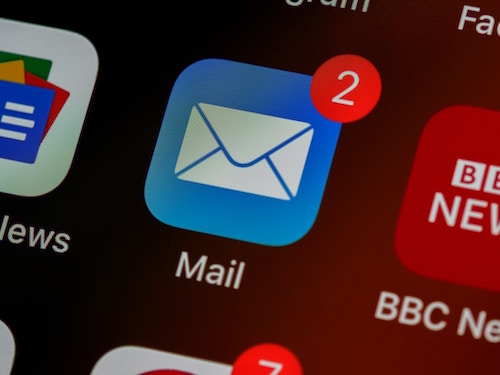
Mail App photo by Brett Jordan on Unsplash
Do a search in your inbox for “unsubscribe” (sometimes it’s written in white on white, serving as invisible ink to keep you from saying goodbye) and unsubscribe from anything you find yourself never reading.
Create homes for emails. Set up a simple hierarchy of subfolders with names of major projects, client names, etc. Having a place for emails to safely, dependably live will encourage you to manually or automatically route necessary them out of your inbox. Don’t feel like you should save all emails. Unless you have to prove that the sender acknowledged receipt or authorized something, you can delete emails just say “Thanks” or “okey-dokey.”
Set up filters or use the Rules function built into your email platform to automatically sort mailing lists to one sub-folder, anything you’re always CCed on even though you know it’s got nothing to do with you to another, and so on. Get the non-essentials in your inbox out of it.
Add emails with meeting links to your calendar, then put the email in a “Pending Event” folder in case you need to check something in advance of the meeting. When an email represents a task you have to do, add it to your to-do list or task app, then move the email to a folder related to that project or issue.
The less that’s in your inbox, the more managemable it will be but you won’t be as tempted to keep “checking email” or feel demoralized by clutter piling up.
Organize your digital passwords.
If you’ve got little bits of paper everywhere telling you how you can access your digital life, it’s slowing you down (and not letting you enjoy the slower times)! And if you’re using the same password everywhere, you’re slowing yourself to an eventual dead-stop if you get hacked!
Use a password manager like 1Password, Bitwarden, or Dashlane to centralize and organize your online login credentials. Then use your bits and pieces of slow time to update and strengthen weak passwords for the accounts you do you use and delete the ones that you don’t. (I started this recently and found dozens of login credentials for websites that don’t even exist anymore!)
Organize your digital files.
I’m not trying to suggest a major organizing project for your slow time; remember, the point is to make progress that will make your life easier without overdoing it.
Start with your cloud storage like Google Drive or Dropbox. Declutter by deleting anything that’s outdated and getting rid of duplicates. (I can’t tell you how often I’ve had three and sometimes even more copies of a PDF that was a “free gift” related to some online course because I attended different webinars by the same speaker.)
Once you’ve reduced your collection to what you actually want to keep, think about the categories into which they can be grouped. It’s funny, but no matter how organized someone’s hard drive might be, their cloud storage tends to be a Wild West of loose files and folders with mysterious names.
Create an organized folder structure that makes sense to you — preferably one that matches what you’re already using on your computer — and when necessary, rename files that are confusing or mysterious.
Update your contacts.
Go through your contacts lists and purge duplicates. Check the accuracy, and make sure to save the numbers and addresses that hold the most information while dumping the ones that have only a partial piece of what you need.
Delete names you don’t need anymore. Going through my phone recently, I found a contact for “Andy Accident.” It took a few moments to realize that that’s how I listed the guy who rear-ended my car at a stoplight in January 2020! I definitely don’t need that number anymore!
The great thing about using your slow time to update your contacts list is that it reminds you of the people you know and like but haven’t chatted with in a while. Make note to call or text or email the people whose names you came across and thought, “Wow, I miss so-and-so!” and then actually DO contact them. They’ll be delighted, and it’s a great way to use those bonus minutes and hours that your slow time makes available.
Once you’ve finished with your contact lists in your devices, move on to pruning your social media accounts (including professional accounts like on LinkedIn). Delete the connections for the company you only followed to enter that one contest or people you linked with two careers ago (and only because you felt obligated). Add new contacts you’ll realize are missing as you remove the outdated or irrelevant ones.
Eliminate app overload.
Your time has given you some breathing room, so why not make some breathing room on your devices?
The Pareto Principle says that 80% of our success comes from 20% of our efforts. That holds true in many ways; 80% of the time, we wear the same 20% of our wardrobe, kids play with the same 20% of their toys, and so on. We mostly use the same 20% of our apps. This is why letting things go from the 80% we hardly ever use makes us feel less cluttered and more productive, even though we anticipate we’ll feel anxious about having let them go, which is why they’re cluttering up our digital spaces in the first place.
Flip through your home screens on your devices and take inventory. (Just be careful not to get caught up in reading notifications or scrolling through social media!)
What apps did you download and never even try because they required setting up a login? What apps did you give up on because they were buggy? Those are the low-hanging fruit you can start deleting. Be like Elsa in Frozen and let them go!
Next, to see where you’re overusing the apps you don’t want to be using as much, check your Digital Wellbeing feature on Android or ScreenTime on iOS. Uninstall the ones that distract or drag you down.
If you’ve still got a pile of distracting apps that you can’t bear to uninstall, move them to your last home screen page to create more friction — you’ll be less likely to happen upon them when looking for your bank app.
Which are the apps you want to use all the time because of the benefits they bring to your well-being? Put them on your first screen.
Finally, organize what’s left. Drag and drop apps onto one another to make folders labeled for shopping, dining, social media, productivity apps, etc. You’re keeping those apps, just making them less obvious. This way, you’ll encounter an app only when you want to rather than when the little notification numbers pop up.
Whatever you do with these upcoming lazy, hazy, crazy days of summer, I hope you enjoy them. But if you do find long stretches of time and aren’t quite sure what to do with them, I hope the above post has given you some options to use your time well and set the stage for the next time life gets busy.
Organize Your Summer So It Doesn’t Disappear So Quickly

When I was a child, each July 4th as the music in the bandshell would stop and we’d pack up our chairs and blankets to the post-fireworks hubbub of people making their way to their cars, my father would always say the same thing.
As Independence Day would ebb away, he’d say, “Well, it’s the 4th of July. Summer’s over.”
And this would always annoy Paper Mommy.
It didn’t make sense. In New York State where we lived, school had usually only let out about two weeks earlier. Summer didn’t even officially begin of June 21st, and wouldn’t end until the third week of September. How could summer be over?
As an adult (and likely to Paper Mommy‘s dismay), I understand what my father was getting at. We all struggle through dark, dismal winters of our lives (literally and figuratively), holding out for the bright energy of the summer. I contend that it’s not spring we ever really eagerly anticipate. Springtime is rainy and windy; it contains the misery of April 15th and paying taxes, and after all, as T. S. Eliot said, April is the cruelest month.
But as May is ushered in, we finally get warm weather. Early graduations, while signaling the end of schooling, also bring new beginnings. And though the holiday is meant to pay tribute to those who died in service of protecting our nation and democracy, Memorial Day is nonetheless the marker we all use to signal the first real refresh of our lives and plans since New Year’s Day.
January 1st puts us on notice (or has us put the world on notice) that we have the power to make changes in who we are. Of course, we experience these changes every day, and don’t need holidays or permission to make ourselves new, as I wrote in Organizing A Fresh Start: Catalysts for Success.
And remaking ourselves and renewing our outlooks doesn’t have to take the shape of a resolution, as I’ve shared for many years, most recently in Review & Renew for 2022: Resolutions, Goals, and Words of the Year.
That said, we’re five full months into the year, and we may not have accomplished what we’d hoped. June is still a few days away, but if we’re not careful, if we’re not intentional, July 4th will be here in the blink of an eye. The week after the July 4th holiday is usually spent recovering from either revelry or obligatory travel to relatives. The heat of the summer builds up and our motivation wears down, and then suddenly it’s August.
For European friends and colleagues, life comes to a stop in August and entire nations turn their backs on toxic productivity and go on holiday. On this side of the Atlantic, we trudge on, working on what we must and shocked at the brevity of weekends when there’s fun to be had at barbecues and pool parties. And then there’s a shocking moment when someone asks what we’re doing for the holiday and Labor Day is one flip-of-the-calendar away!
To Paper Mommy‘s chagrin, my father was right. By the time the smoky scent of the fireworks retreats on July 4th, it’ll be a merely blink, two at most, and summer will be over.

But it doesn’t HAVE to be that way. We can take our summer back. We have 98 days from Memorial Day to Labor Day. What if we make a pact to make some of our plans, perhaps even actual dreams, come true?
UNDERSTAND WHY THE SUMMER DISAPPEARS SO QUICKLY
Way back in March 2020, in Does Anybody Really Know What Time It Is? 5 Strategies to Cope With Pandemic Time Dilation, I talked about how the oddness of the COVID lockdown made us lose track of time. I compared it to how in the first few days of a vacation, we’re hyper-aware of the strange stillness of not abiding by our usual and strict minute-by-minute schedules. But by a while into the vacation, we let our guards down and allow ourselves to drift off into the seductive haziness of having too few obligations.
If your work has “summer Fridays” or your kids don’t have scheduled activities (camp or lessons or clubs), you likely know what it’s like when summer makes your schedule feel more amorphous. Mealtimes, bedtimes, worktimes…summer time, in general, lacks structure.
When we aren’t careful about adding structure, we sink. (And while most TV-viewing GenXers have been shocked by how little literal quicksand we encounter in our 21st-century lives, we’ve nonetheless found that summer, like a mini-version of our early pandemic lives, causes us to sink into a malaise.)
MAKE YOUR SUMMER SCHEDULE SERVE YOUR GOALS
What I said in Struggling To Get Things Done? Paper Doll’s Advice & The Task Management & Time Blocking Virtual Summit 2022 is still apt. While much of that advice was envisioned for accomplishing things when there’s too much going on in your life, it’s surprisingly useful when the summer’s vagueness and low expectations melts our brains and our aspirations.
1) Put structure in your life.
Create daily rituals so you have a real sense of the start and end of your workday, and develop buffer habits so your brain gets the same benefits of a commute even if you’re walking around the block instead of driving to work while listening to your favorite podcast.
Time block to create boundaries in your day. By blocking off specific times in your schedule for overarching categories (passive work projects, creative/active work projects, self-care, self-education, entertainment) you’re guaranteeing that there’s a place in your schedule for each. Knowing this gives you a sense of security, a system upon which you can depend.
Someday is not a day on the calendar. Whether you schedule 15 minutes in the morning or two hours on each weekend day or a chunk of time on Tuesdays and Thursdays, nothing gets done unless you assign a place for a task or behavior to live (in your schedule). For help, revisit:
Playing With Blocks: Success Strategies for Time Blocking Productivity
Highlights from the 2023 Task Management & Time Blocking Summit
Surprising Productivity Advice & the 2023 Task Management & Time Blocking Summit
2) Enhance novelty.
During the summer, the weather tends to offer a delightful and dreamy sameness. With the exception of rain, the weather tends to offer little variance. The temperature tends to be the same, daily, and it requires fewer precautions on our part. So, we have to create opportunities for novelty.
If you work from home, especially on days where you don’t have to Zoom into a meeting, work at least a few hours a day from a different venue. Set up on the patio or your balcony before the day gets too hot. A friend often posts a photo of his laptop balanced on his outstretched legs in a hammock! Even moving to a different area in your house with a different view from the window can refresh your energy and give you the spark to tackle new opportunities.
Don’t stop with work. Make a point of eating different foods the usual, and consider dining al fresco in your backyard. Without a lot of advanced effort or admin, invite friends over to picnic after dinner without planning. They bring their meal, you eat yours, and maybe you share, but the point of the conviviality (beyond the loveliness of their company) is doing something different.
Author Laura Vanderkam‘s Tranquility by Tuesday: 9 Ways to Calm the Chaos and Make Time for What Matters, has a good handle on overcoming the sameness of our days.
As a result of her research on the tracked time use of 150 of her study participants, Vanderkam posits that to get out of the ruts our lives inevitably fall into, we need more novelty, texture, and richness in our time and our tasks.
I’ve talked about Vanderkam’s nifty idea before. She encourages people to identify one “big adventure” (lasting perhaps half a weekend day) and one “little adventure” (lasting an hour) each week to introduce novelty. Why? As Vanderkam noted, “We don’t ask where did the time go when we remember where the time went.”
As @LauraVanderkam noted, *We don't ask 'where did the time go?' when we remember where the time went.* Click To Tweet3) Create vivid sensory clues for the passing of time!
You’ve heard this from me before. Go analog!
Digital time just doesn’t provide the same sense of the passage of time as analog wristwatches and clocks. You don’t have to chuck everything out, though.
Identify which of your digital clocks you can change to an analog appearance.
- Car — This weekend, I couldn’t figure out why my car was playing a podcast over Bluetooth when my phone was plugged into the charger. (Short answer: the charging cable worked fine for charging but decided not to be helpful for CarPlay. Apparently, that’s a thing that happens.) But while I was trying to figure out what the heck was wrong with CarPlay, I tapped on literally every function on my Kia’s screen. And I learned that the default screen has ALL SORTS of different display options, just like you can change the wallpaper on your phone. And one of those options let me me change the default screen to an analog one.
- Trackers — For example, my FitBit has multiple clock faces, from plain digital to an avant guard look to a lovely, old-fashioned analog clock face.
- Phones — Android phones allow you to change your lock screen from digital to analog easily. Things are a little murkier on the iPhone; the clock app icon is a working analog clock (Yes, really! Watch the red second hand sweep the clock face), but the lock screen stays digital. Sigh.
Invite physical analog clocks into your space to make the passage of time more visible and real, and shake up your relationship with time.
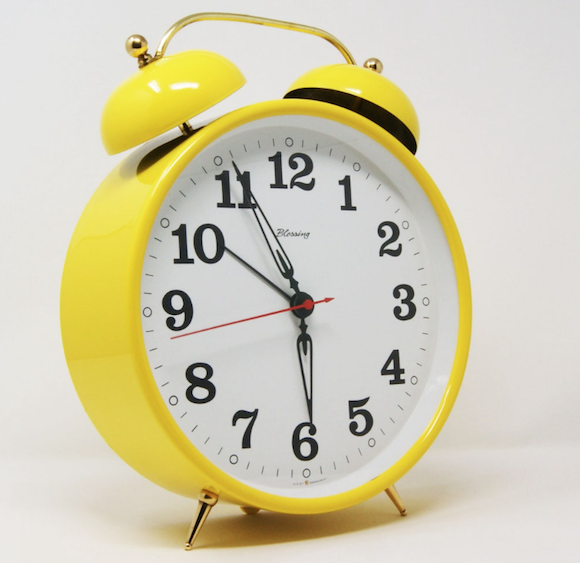
4) Remember self-care!
It’s no secret that I’m not a morning person, but it’s only been in the past few years that I’ve learned that our bodies need daylight in order to set our internal clocks to that we’re able to sleep at night. (This explains so much!) So, while there’s more daylight in the summer, it does you no good if you’re stuck inside your office or home and toiling away, missing it.
At work, your fellow staffers may take advantage of smoke breaks. (Ugh.) That’s paid break time of which you may never have availed yourself. So try it. No, don’t smoke (seriously, don’t), but take the break time and go outside. Here are some good moments to take a fresh-air-and-sunshine break:
- When you’ve come out of a meeting
- If you’ve just finished a virtual call on Zoom or Meet or Teams
- When you make three mistakes in a row. Everybody makes booboos, but if you mis-speak three times, or get confused about a concept, or just have a series of oopsies, that’s a sign that your brain is getting fuzzy and you need to refresh.
- If you’re angry, frustrated, hurt, or disappointed. There’s a reason the “Taking a stupid walk for my stupid mental health” TikTok trend has become so popular. It works!
- When you’ve just finished a chunk of deep work. Whether you’ve done a series of 25-minute pomodoros and are ready for a longer break, or you’ve tried the 52/17 Method and you’re ready for 17 minutes of sunlight, get the heck away from your desk. (More more on this, re-read Frogs, Tomatoes, and Bees: Time Techniques to Get Things Done.)
You also need sleep (aim for multiples of 90 minutes, so try 7 1/2 or 9 hours rather than your usual eight) to make sure you’re getting complete REM cycles.
Remember exercise. Whether it’s gentle yoga or power cardio, your body needs strong muscles, flexibility, and stamina.
Hydration and good nutrition are also essential. And no, this isn’t a wellness blog. But all of these things require good organization and management of your time. Set an alarm on your smartwatch or use an app to remind you to drink water.
5) Take a Technology Break, or a Few
Our dependence on technology can prevent us from noticing the real world all around us and the passage of time. I’m not saying to send letters by carrier pigeon instead of using email or scribbling numbers on the wall instead of using a spreadsheet. (Though it might be neat to receive a letter via the Owl Postal Service in the Harry Potter books!) But consider some options for reducing your dependence on tech when it’s not serving your productivity needs.
Keep the phone out of your bedroom. You’ll be less likely to doom scroll into the wee hours, and the blue light of your device won’t wreck your ability to fall and stay asleep.
When you do wake up, don’t grab your phone right away. Instead, do something intentional that will help you achieve your goals for making these hazy, crazy days of summer something more productive (or relaxing or dream-fulfilling). Why not:
- Meditate or explore silent devotion?
- Read a few pages of a real book?
- Visualize your goals for the day and embrace some positive affirmations?
- Get moving? Do some yoga stretches, go for a brisk walk, or do a short workout, or any tiny movement that won’t feel like labor but a nice blip of activity!
Start your day calmly and in control so you have a much better chance of achieving whatever it is you’d like to do with your summer.
When you’re working (or playing), keep your phone in your drawer or your bag. You’ll be distracted and interrupted far less often, allowing you to focus on what you’re doing and get into a flow state.
And maybe consider a digital detox where you put your gadgets and gizmos away after a certain time in the evening, or a technology sabbath where you eschew those pings and whooshes and curated feeds for 24 hours a week.
IDENTIFY WHAT YOU WANT TO ACCOMPLISH THIS SUMMER
Only you know what you want to achieve this summer. Once you’ve got an overarching goal, you can consider how you’ll implement it in small, manageable ways.
Write a book? If you do want to write a book, check out the sixth year of acclaimed author Jami Attenberg‘s 1000 Words of Summer. It provides accountability and motivation for getting a jump start on your writing. And maybe you could follow it up in November with NaNoWriMo?
Get in shape? Pick just one thing. If you’re intrinsically motivated, block time to swim in the morning before work instead of scrolling social media and hitting your snooze alarm, or after work to give your brain a complete refresh before having a “part 2” of your day. If you need external motivation and support, explore joining a summer workout program. Many cities and communities have outdoor sponsored by the Parks & Recreation departments for free or at minimal costs, and it’s less pressure (and cost) than joining a gym.
Maybe you don’t even know what you want to do this summer, but you just know you want this summer to be different and not whoosh by in a series of passing strangers on the street and saying, “Hot enough for you?” over and over. Peruse these posts for ideas:
102 Summer Goals That Are Perfect For Overthinkers
31 Best Summer Goals to Set This Season (2023)
45 Summer Goals: A List to Set for 2023
25 Summer Goals to Make the Most of the Season
Your summer plan doesn’t have to be a big thing. It doesn’t have to be a thing at all. Not everything has to be a big enough deal to make your family’s holiday newsletter. You could decide to eat more seasonal produce (rather than letting it turn to glop in the back of your fridge).

(I don’t know why this man needed so many bananas, but I applaud his enthusiasm!)
Maybe decide to set aside your spare change all summer and then donate it to charity…or splurge on something fabulous Labor Day weekend. (I won’t judge!) You could even strive to do some the things you missed out on during COVID, whether that’s seeing your favorite band on tour or traveling to a far-flung place.
Maybe you want to spend more time with your children to build memories, or have more quality time with your Significant Other or your BFF (not that your best friend isn’t also extremely significant)! Follow Laura Vanderkam’s suggestion and plot out big and little adventures for the summer weeks. By Labor Day, you’ll have stacked up a series of adventures that will make the summer memorable.
FIND A PARTNER
As I mentioned briefly in Paper Doll To the Rescue: How To Save Wet Books & Documents, a few summers ago, after a lifetime of trying (and failing) to read Anna Karenina, I partnered with my college friend and pre-COVID traveling buddy to read the book together. She’s a pediatrician in Upstate New York; I’m a Paper Doll in Tennessee. But through email and texts and phone calls, we were able to explore the characters and how we interpreted their behaviors through a modern lens. (Honestly, we gossiped about them as if they were Grey’s Anatomy characters. Just very, very Russian.)
We’ve decided to do it again, knowing we’re less likely to give up at a boring point if we’re doing this together. We agreed on reading another classic — we’re both fans of Jane Austen, but I already reread all six novels annually, and we wanted something new to both of us. I suggested Middlemarch, but she’s anti-George Eliot due to an unfortunate high school Silas Marner experience. She countered with Frankenstein, and while I appreciate Mary Shelley’s under-appreciated talents, I’ve read it before and it’s a downer.
Paper Doll on How to Celebrate Organizing and Productivity with Friends
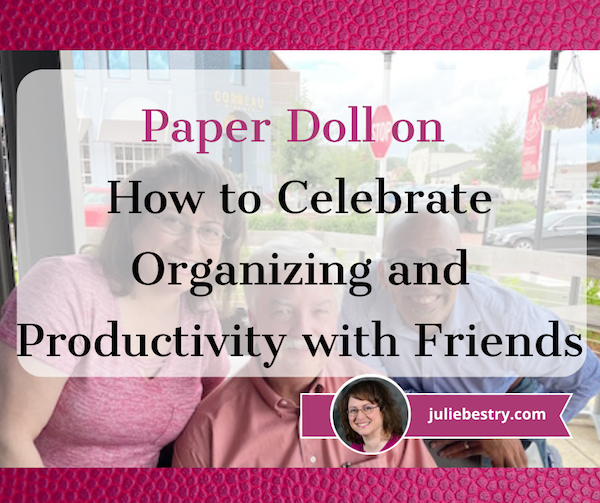
DO IT TODAY
Back in March, I told you all about my fabulous friend-of-the-blog (and of the blogger — me!), Kara Cutruzzula in Paper Doll Interviews Motivational Wordsmith Kara Cutruzzula. Writer/editor/playwright/lyricist/librettist & all-around-cool-kitten Kara and I have been collaborating for years and sharing one another’s achievements, and today is a chance to share something fun we’ve created together.
If you didn’t get the chance to read that post back, I recommend you jump over to do that. (There are some cool comedic and musical interludes!) We covered Kara’s talents at writing dialogue, especially spitfire-fast banter for whip-smart female characters like those in The Gilmore Girls and The Marvelous Mrs. Maisel, and her skills at writing musicals. That post dug deep into Kara’s background and the resources she creates, including her uplifting Brass Ring Daily newsletter, and her books:
Paper Doll Suggests What to Watch to Get More Organized and Productive

You may have heard that for the first time in 15 years, the Writers Guild of America has gone on strike. What they’re asking for is reasonable, especially in light of all that’s changed in the television industry (including streaming services). Meanwhile, you may find yourself with a shortage of your favorite shows to watch.
You’ve got lots of options to fill your time. You could read a book (or several), in which case, you might seek guidance from 12 Ways to Organize Your Life to Read More — Part 1 (When, Where, What, With Whom) and 12 Ways to Organize Your Life to Read More — Part 2 (Reading Lists, Challenges & Ice Cream Samples) Or you could get out in the sunshine or hang out with friends.
But what can you do if you really like to sit in a comfy chair and watch things on a glossy screen? Well, if you’ve already exhausted every English-language comedy and drama on Amazon Prime, Apple TV, Netflix, Hulu, Paramount+, Disney+, and YaddaYadda+, you could try watching one of the many Korean-language dramas on Netflix. (I recommend Extraordinary Attorney Woo — it’s charming and delightful.)
Or you could try something completely different. Today’s post offers up a mix of webinars and actual TV programming designed to help you live a better, more productive, more organized life.
DAILY DOSE MINI CHALLENGES
Could you use a little support in reaching your goals? My cool friend Georgia Homsany runs Daily Dose, a wellness company celebrating its 3-year anniversary! How do you celebrate three years of supporting people’s health and wellness needs through corporate and individual endeavors? With three really cool weeks of 5-day mini-challenges! And I get to be part of one of them!
- 5-Day Positivity Challenge (May 8-12) — Learn how to conquer stress and negativity with simple reminders and healthy habits to transform your mindset. (It starts today!)
- How to Overcome Perfectionism (May 15-19) — Learn how recognize the signs of perfectionist tendencies, understand the negative effects of it, and gain skills to minimize the idea of perfection in your workplace and personal life.
- Declutter Your Space and Schedule (May 22-26) — Receive actionable advice to help you get motivated, make progress, and gain control over the life and work clutter that weighs you down. From chaotic mornings to cluttered desks and screens to procrastination and wonky schedules, I’ll be telling you how to make it all better.
Yup, that last one is my mini-challenge. And you KNOW how much I pack into whatever I deliver.
For each mini-challenge, you get:
- Video content delivered daily over the course of five days. Videos are designed to be short and to the point so you can learn and get on with your day to incorporate the advice.
- Email and/or text reminder notifications — and you get to set your reminder preference!
- An interactive platform to ask questions and chat with other participants.
Plus, there’s a BONUS: Each participant will also be entered in a raffle to win one of three wellness prizes! (One (1) winner per challenge.)
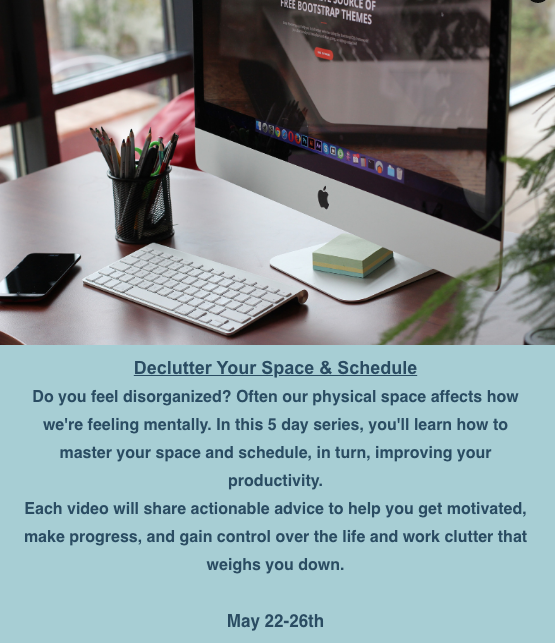
The cost is $25 per challenge, or $65 for all three! (And remember, the first challenge starts today, Monday, May 8th!) So go ahead and register before it falls to the bottom of your to-do list!
Declutter Your Space and Schedule
If you have questions or want to sign register for all three, email Daily Dose with “5 Day Mini Courses” in the subject line. And say hi from me!
HOW TO FIX MEETINGS
Graham Allcott of Think Productive is the author of How to be a Productivity Ninja: Worry Less, Achieve More and Love What You Do, which has a prominent place on my bookshelf.






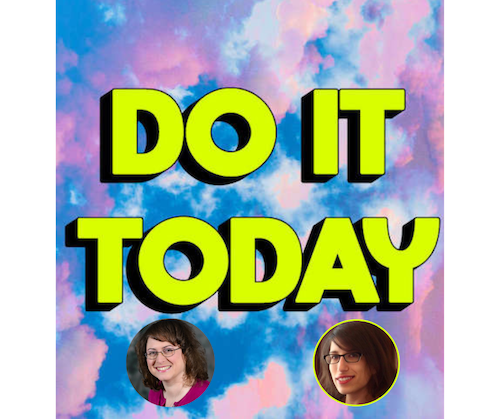

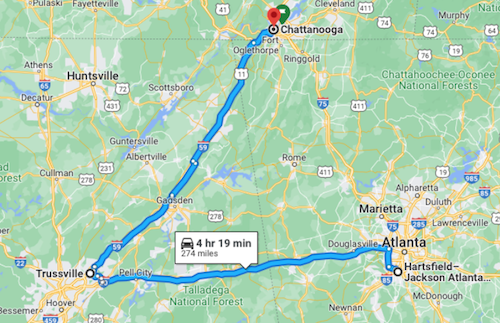
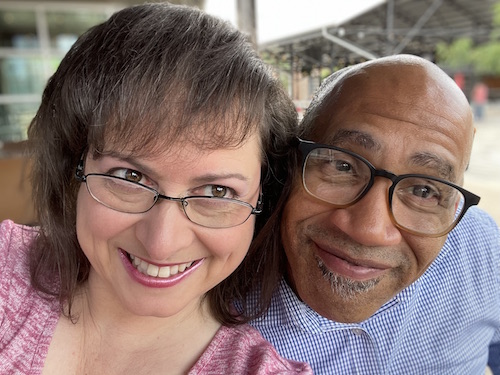
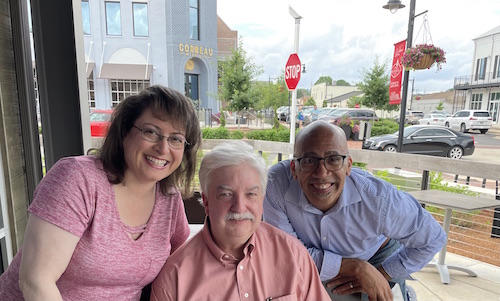
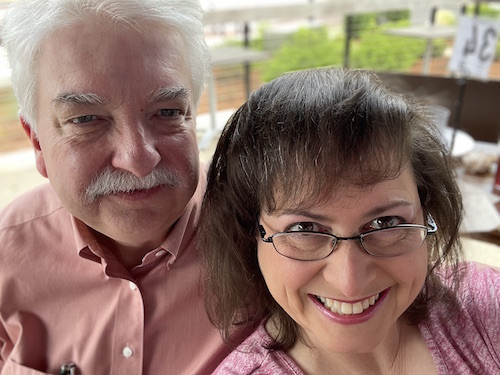
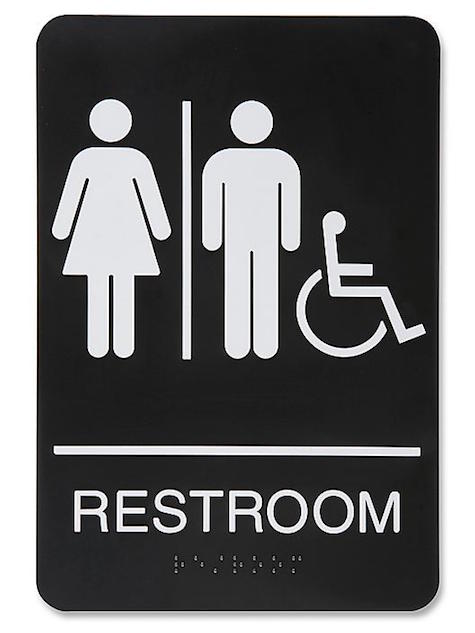 At
At 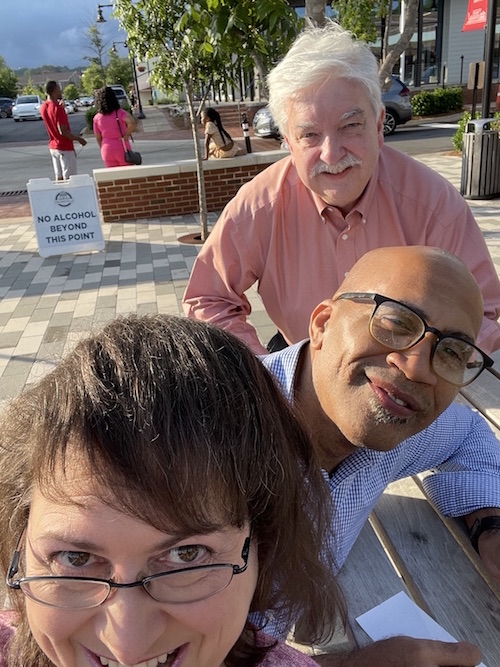







Follow Me